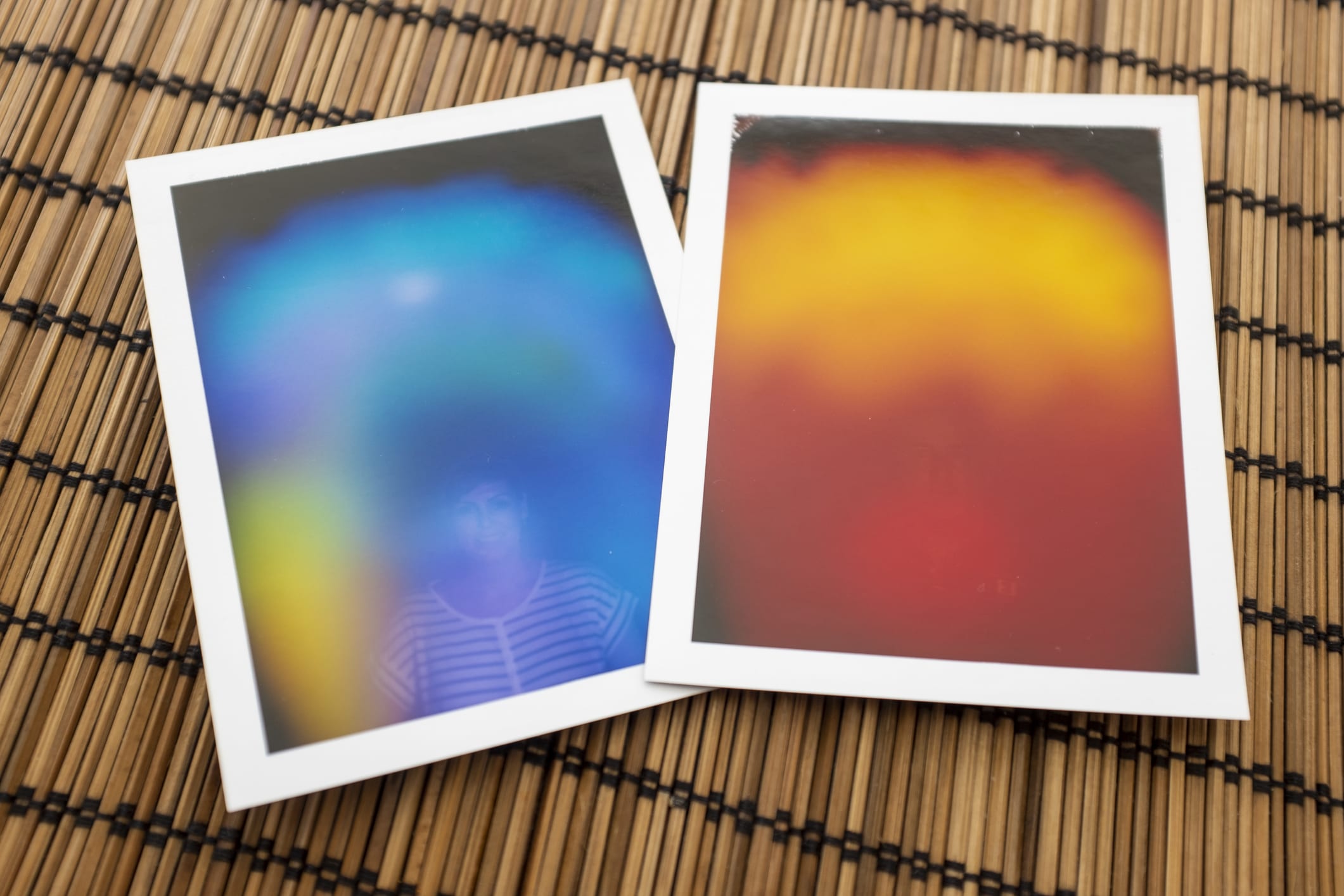When we think of our bodies, we often stop at the surface of our skin. But, there is so much more to us than the physical — it’s called the aura and it is believed to be connected to our energy field. Like a personal rainbow surrounding our bodies, the aura can tell us a lot about who we are, how we are feeling, and what we are experiencing.
“The aura is your personal space, the part of you that is slightly beyond your physical body,” says Jerry Mikutis a yoga and Reiki teacher in Chicago. “It is composed of our life force, our vitality,” she adds, noting “we all have an aura and we’re constantly interacting with each other’s auras whether or not we are consciously aware of it.”
The aura layers
While we might visualize the aura as this big bubble of glowing light around us, there’s more to it than that — layers upon layers more, to be exact. While it is believed that there are more than a dozen layers of the aura, there is a focus on the main seven. “They start from the nearest to the physical body and move outward,” says Allison Chawla, a licensed clinical psychotherapist, spiritual counselor, energy and aura reader, medium, and certified life coach. “Because of their connections, they not only reflect, but influence the way you think, feel, act, and live out your days,” she adds.
The seven layers of the aura are the Etheric Layer, Emotional Layer, Mental Layer, Astral Layer, Etheric Template, Celestial Layer, and Spiritual Layer.
- Etheric Layer: This layer is the one closest to the body, about one or two inches away from the surface of the skin. It is connected to the root chakra.
- Emotional Layer: After the Etheric Layer is the Emotional Layer. It can expand up to three inches outward and is connected to the second chakra, aka the Sacral. Much like its name, this layer is also connected to our emotions.
- Mental Layer: Because it is connected to the third chakra — the solar plexus — this aura layer is all about our thought process. It sits about 3 to 8 inches away from the body.
- Astral Layer: The fourth layer of the aura is connected to the heart chakra and acts as a bridge between the physical and spiritual.
- Etheric Template: This layer is connected to the throat chakra and considered the blueprint of the physical body because it exists on the physical plane.
- Celestial Layer: Because this layer is connected to the Third Eye chakra, it is the layer where the spiritual connection starts. It’s also believed to be the layer of unconditional love.
- Spiritual Layer: The seventh layer of the aura is connected to the crown chakra, which means it has a strong spiritual connection. This layer is believed to be connected to psychic abilities.
How do you see your aura color?
It’s impossible to think about the aura without thinking about colors. That’s because the layers are represented by colors themselves, which can show up during an aura reading or photograph. Each color has an energy of its own that helps us get a better understanding of what our personal rainbow is trying to tell us.
- Red: This aura color is connected to the root chakra and is connected to energies of vitality, strength, leadership, passion, success, perfectionism, ambition, love, rage, and impulse.
- Orange: This aura color is connected to the sacral chakra and is connected to energies of creativity, confidence, warmth, balance, abundance, stimulation, security, and fun.
- Yellow: This aura color also represents the solar plexus chakra, which is connected to personal power. It can bring energies of optimism, freedom, logic, joy, inspiration, open-mindedness, and — similar to orange — creative vibes.
- Green: This aura color is connected to the heart chakra and can provoke energies of healing, service, harmony, acceptance, and patience. It’s a very soothing color that can also connect us to nature, bringing up feelings of calm and harmony.
- Cobalt blue: The color blue is typically connected to energies of empathy, loyalty, wisdom, and intuition. Self-expression and devotion are also blue energies, as are clarity and peace.
- Turquoise: This gorgeous aura color is connected to healing energies. It is influential, serene, organized, and inclusive, as well.
- Gold: This color is typically associated with wealth and, when it comes to the aura, that is sort of true as it shows spiritual wealth. Those with gold in their aura have strengthened their connection to spirituality. Gold can also bring in energies of compassion, courage, and illumination.
- Pink: This aura color is a soft and gentle color that brings with it energies of romance, love, sincerity, friendship, originality, and sympathy. Pink is also sensitive and generous.
- Lavender: This aura color is connected to leadership and spirituality. Energies of intuition and imagination also come up with lavender.
- White: This color is associated with the crown chakra and is the most spiritual color in the aura. It’s also connected to generosity, integrity, and wisdom.
Like a life-sized mood ring, auras can shift based on changes in your energy and other factors (which influence your energy), such as your emotions. According to Mikutis, “there is part of our aura that is more concrete,” as it is not as easily influenced and, therefore, slower to change. “It’s changing, but over a long period of time.”
While the layers of the aura color shift to reflect what’s going on in your energetic orbit, some parts of it don’t change at all. “This is you, the uniqueness of you,” says Mikutis. “There has never been a you before and there will never be a you again, and the aura reflects that,” she adds.
Albeit a popular way to experience the aura, you don’t need to capture your auric field with a photograph to see your aura. And, you don’t need to be born with a special gift of physically seeing the aura, either. While some people are born with this ability, many aura readers (and energy healers) can access information in the aura field using the Clair Senses.
There is a Clair Sense for each of our physical senses, which allows us to experience the aura colors through clear knowing (Claircognizance), clear feeling (Clairsentience), clear hearing (Clairaudience), clear smelling (Clairalience), clear tasting (Clairgustance).
What are Clair Senses and can anyone develop them?
“Clair Senses”, also known as “the Clairs,” are more heightened versions of the typical senses we experience — such as sight and smell — on the day to day. “The Clairs are the ways in which our traditional senses connect with the world of energy and spirit and receive intuitive information,” explains Carrie Pitzulo founder of Ancient Magic, Modern Living, an online self-empowerment program for women.
As a Reiki Master, I often tap into my own intuition — which is best described as an instinctive feeling that does not require conscious reasoning — through my strongest Clair Senses to download information and insights for clients. I know what you’re thinking: How is this even possible? And, I too once felt that way. Before I began training as a Reiki practitioner, I thought that only people with special abilities could access this sense of heightened information. But, through my training and practice, I have come to learn (and experience) that we are all born with the ability to access these energetic senses — it just takes a little practice.
The Clair Senses
According to Maria Hill, a Psychic Medium and Cofounder of The Happy Healing Shop, there are six Clair Senses — all of which connect to a sense you are likely already familiar with.
View this post on InstagramA post shared by Tiesta Duggal | Life Coach (@navyam_themindandsoulabode)
Clairvoyance: The first and most common Clair Sense is Clairvoyance, which translates to “clear seeing.” Hill says those who are Clairvoyant are typically visual people. “When people talk to you, when you listen to a lecture or read a book, you can get very vivid imagery in your mind or daydream about it,” she notes. “You’ve seen movement out the corner of your eye before, but nothing was there when you looked,” she adds, noting that, you might also have had imaginary friends or seen “other beings” as a kid.
Claircognizance: Also known as “clear knowing,” this Clair Sense is all about your inner knowledge. If you’re Claircognizant, you’re typically more analytical, says Hill. “Your mind is occupied with many thoughts, theories, or ideas,” she adds, noting that your mind is most likely always running and it can be a challenge to meditate. “You may receive answers to things, sometimes hours or days later after you’ve been pondering about it in your mind.” Hill says, with this Clair Sense, answers and solutions typically come easier to you “even if you didn’t know about the subject or situation beforehand.” She also says you have a good read on when someone is being dishonest or shouldn’t be trusted.
Clairsentience: Sometimes referred to as “Clairempathy,” this Clair Sense is all about “clear feeling.” Those who experience strong gut feelings are typically Clairsentient. “Sometimes you are able to read other people’s emotions or the energy of a room,” says Hill. “You can also feel it literally in your gut when someone is lying or telling the truth,” she adds. It’s also possible to feel a loved ones’ presence or a spirit or angel with this Clair Sense.
Clairaudience: Another Clair Sense that one might come in contact with is that of clear hearing, or Clairaudience. Hill says the person who is most tapped into this Clair Sense is typically more of a listener than a talker. “You’ve had words pop into your head,” she adds, noting that listening to music, songwriting, or playing an instrument can help you feel more connected to yourself. “Also, when you ask for signs [from the universe], you receive them in an auditory way (i.e. through songs and speech).”
Clairalience: This Clair Sense is all about clear smelling. “Sometimes you’ve looked at something and guessed what it smells like, even before you’ve tried it or seen it in person,” says Hill. “If someone is talking about an experience, you may be able to smell scents from the stories they are telling you, without having been there,” she adds. She also says that thinking about a person and getting a rush of their scent — such as their perfume or the smell of lingering cigar smoke — is an example of Clairalience.
Clairaugustance: You can also experience “clear tasting,” which in the Clairs is known as Clairaugustance. “You might be able to cook things without looking at a recipe because you just know how it’ll taste, even without tasting it,” says Hill. “When you think of a person, you can get a certain taste in your mouth, such as a signature dish your mom always made,” she adds.
Developing Clair Senses
According to Pitzulo, some people are born with their Clair Senses already strengthened but anyone can develop and strengthen Clair Senses. “We all have bodies, so we all have intuition (The Clairs),” she notes, adding that “some people have a Clair or combination of Clairs that are stronger or weaker than others. I firmly believe that everyone receives intuitive information — it’s just that most of us aren’t taught how to notice and trust it.”

Pitzulo explains there are lots of ways to strengthen our intuition and tap into the Clair senses. She recommends “quieting our minds, scanning our bodies, and slowing down long enough to pay attention,” or, in other words, spending more time inward. But, Pitzulo believes that the most important thing you can do to unlock your intuition is to believe and trust. This is something I was taught throughout my Reiki training — and consistently remind myself of when my conscious mind gets in the way of my intuitive thoughts. “When you give yourself permission to trust, the universe responds with more signs and messages,” says Pitzulo. “Your spirit opens up to receive more,” she adds.
Speaking of going inward, Hill recommends regular meditation to access and strengthen intuition. “Getting your brain into that state of mind allows messages to come more easily to you,” she notes, adding that doing things that allow your mind to naturally drift is also a great way to strengthen your Clairs. “You can get ideas, solutions, insight, and answers while doing things such as driving the car, showering, or taking a walk,” she adds. This is known as active meditation.







